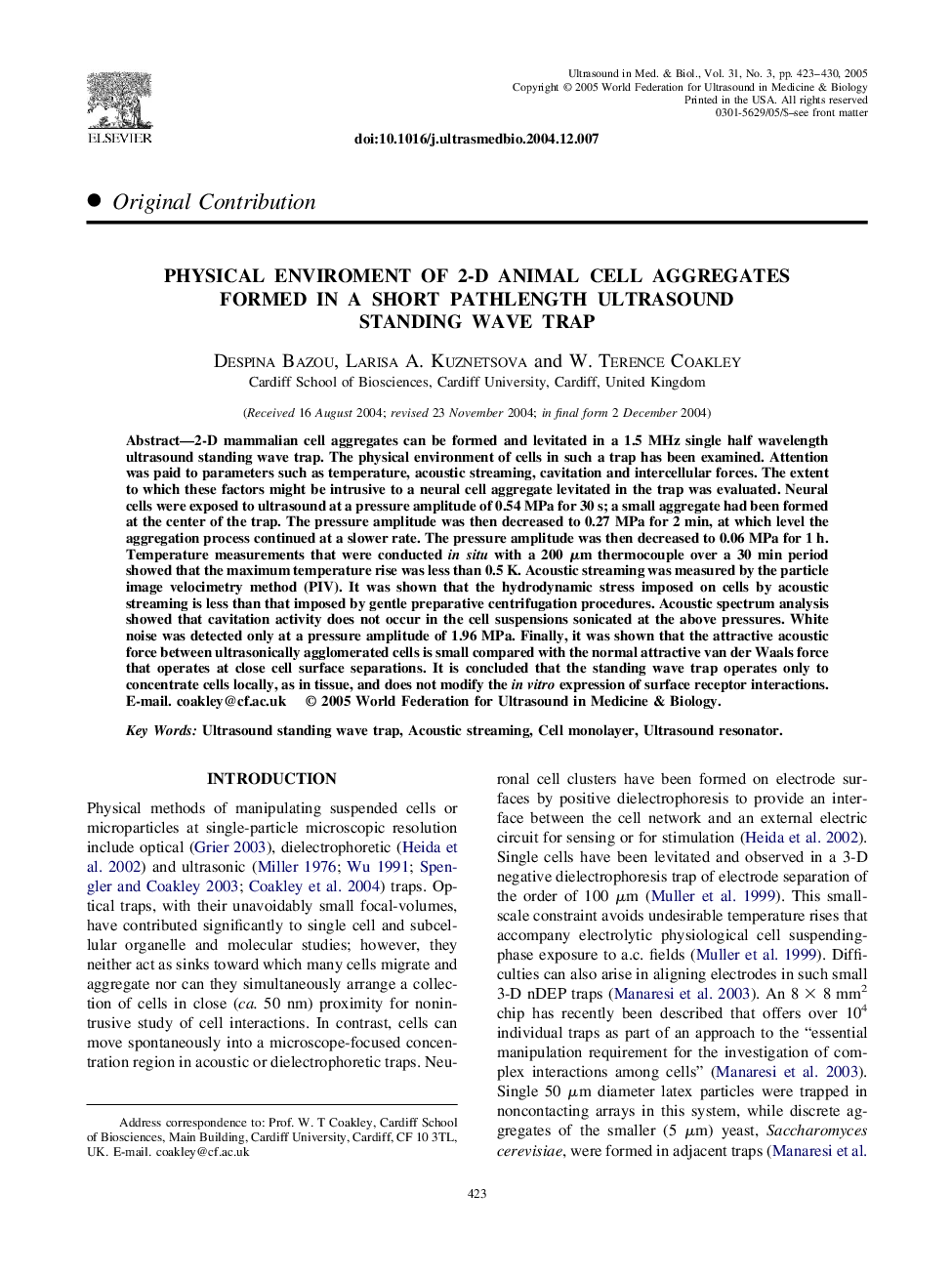| Article ID | Journal | Published Year | Pages | File Type |
|---|---|---|---|---|
| 10693222 | Ultrasound in Medicine & Biology | 2005 | 8 Pages |
Abstract
2-D mammalian cell aggregates can be formed and levitated in a 1.5 MHz single half wavelength ultrasound standing wave trap. The physical environment of cells in such a trap has been examined. Attention was paid to parameters such as temperature, acoustic streaming, cavitation and intercellular forces. The extent to which these factors might be intrusive to a neural cell aggregate levitated in the trap was evaluated. Neural cells were exposed to ultrasound at a pressure amplitude of 0.54 MPa for 30 s; a small aggregate had been formed at the center of the trap. The pressure amplitude was then decreased to 0.27 MPa for 2 min, at which level the aggregation process continued at a slower rate. The pressure amplitude was then decreased to 0.06 MPa for 1 h. Temperature measurements that were conducted in situ with a 200 μm thermocouple over a 30 min period showed that the maximum temperature rise was less than 0.5 K. Acoustic streaming was measured by the particle image velocimetry method (PIV). It was shown that the hydrodynamic stress imposed on cells by acoustic streaming is less than that imposed by gentle preparative centrifugation procedures. Acoustic spectrum analysis showed that cavitation activity does not occur in the cell suspensions sonicated at the above pressures. White noise was detected only at a pressure amplitude of 1.96 MPa. Finally, it was shown that the attractive acoustic force between ultrasonically agglomerated cells is small compared with the normal attractive van der Waals force that operates at close cell surface separations. It is concluded that the standing wave trap operates only to concentrate cells locally, as in tissue, and does not modify the in vitro expression of surface receptor interactions. E-mail. coakley@cf.ac.uk
Keywords
Related Topics
Physical Sciences and Engineering
Physics and Astronomy
Acoustics and Ultrasonics
Authors
Despina Bazou, Larisa A. Kuznetsova, W. Terence Coakley,
